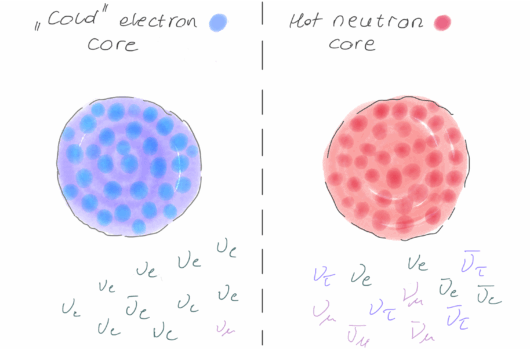Dynamical ejecta synchrotron emission as possible contributor to the rebrightening of GRB170817A
Dynamical ejecta synchrotron emission as possible contributor to the rebrightening of GRB170817A
View
Abstract
Over the past three years, the fading non-thermal emission from the GW170817 remained generally consistent with the synchrotron afterglow from the forward shock of a relativistic structured jet. Recent observations by Hajela et al. (2021) indicate the emergence of a new component in the X-ray band. We show that the new observations are compatible with a rebrightening due to non-thermal emission from the fast tail of the dynamical ejecta of ab-initio BNS merger simulations. This provides a new avenue to constrain binary parameters. Specifically, we find that equal mass models with soft equation of state (EOS) and high mass ratio models with stiff EOSs are disfavored as they typically predict afterglows that peak too early to explain observations. Moderate stiffness and mass ratio models, instead, tend to be in good overall agreement with the data.




